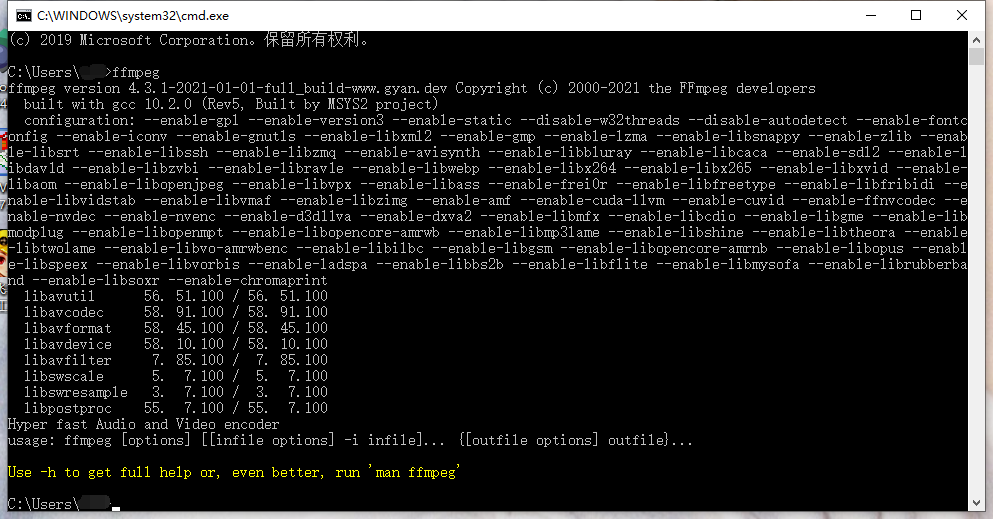
This is the example of ffmpeg reading writing audio files in python.It can help you to guide. If u can also give me about placement hints ,It will be very usefull for me.I also want to call the image many times as value.And Im going to use it on vehicle detection.Gonna call it as a frame and doing processing. Image = omstring(raw_image, dtype='uint8').reshape((640, 360, 3)) import ffmpeg stream ffmpeg.input('input.mp4') stream ffmpeg.hflip(stream) stream ffmpeg.output(stream, 'output.mp4') n(stream) import ffmpeg ( ffmpeg. I tried to adapt it but It doesnt look right.
Ffmpeg python import code#
I want to adapt the ffmpeg code into pipe code. That's it! I hope this quick tutorial helped you out extracting metadata of any media file.įinally, if you're a beginner and want to learn Python, I suggest you take the Python For Everybody Coursera course, in which you'll learn a lot about Python.I have a working ffmpeg command which converts rtsp to image.įFmpeg command here: ffmpeg -i rtsp://192.168.200.230 -vf fps=fps=20/1 -vb 20M -qscale:v 2 img%d.jpg

'codec_long_name': 'MP3 (MPEG audio layer 3)', Below is a run on an MP3 file: $ python extract_media_metadata.py zoo.mp3 That's a lot of information including the duration in seconds, sample rate, codec information, and a lot more.

I'm going to run it on a video file: $ python extract_media_metadata.py zoo.mp4 import ffmpy import os path './Videos/MyVideos/' for filename in os.listdir (path): name filename.replace ('.avi','') os.mkdir (os.path.join (path,name)) ffmpeg command here. We also use pprint instead of print, so it'll print the Python dictionary in a human-readable way. ffmpeg -i mymovie.avi -f image2 -vf fpsfps1 outputd.png. The ffmpeg.probe() method uses the ffprobe command under the hood. We're getting the media file path from the command-line arguments, so we don't have to modify the code whenever we want to extract the metadata of a new media file. # uses ffprobe command to extract all possible metadata from the media file # read the audio/video file from the command line arguments However, ffmpeg-python seems to work well for both simple and complex usage.īelow is the code responsible for extracting the metadata: import ffmpegįrom pprint import pprint # for printing Python dictionaries in a human-readable way There are a lot of Python wrappers of FFmpeg.

Ffmpeg python import install#
Once you have it installed, you need to install the Python wrapper: $ pip install ffmpeg-python Use this link to get it installed in your environment. To make everything work properly, you need to install FFmpeg. In this quick tutorial, you will learn how you can extract video or audio metadata in Python using FFmpeg. import ffmpeg video ffmpeg.input('Pencil.mp4') video im(start5, duration5) video.

The following example cuts the video Pencil.mp4 from 5s to 10s and saves it as output.mp4. Video metadata is all available information about a video file, such as width, height, codec type, fps, duration, and many more. Since we have already configured FFmpeg on our system, let’s use some FFmpeg commands to work with videos in Python. There are many reasons why you want to include the metadata of a video or any media file in your Python application.
Ffmpeg python import how to#
I know that this can be done in python, but I don't know how to translate an ffmpeg command to a python code.
Disclosure: This post may contain affiliate links, meaning when you click the links and make a purchase, we receive a commission. ffmpeg -i
 0 kommentar(er)
0 kommentar(er)
